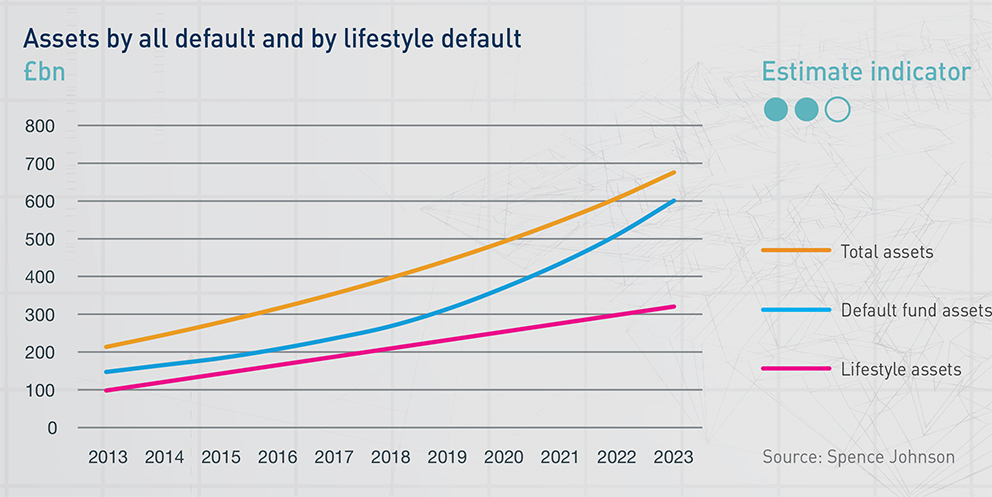Auto-enrolment has raised the bar for default fund design as more people than ever before rely on defined contribution schemes to provide adequately for their retirement. While default funds have increasingly become a feature of the DC pensions landscape, under auto-enrolment legislation the attention to them has increased. Employers now have a duty to auto-enrol certain workers into a qualifying workplace pension and in order to qualify for automatic enrolment, the scheme must have a default investment option in place, so employees – many of whom will be joining a pension scheme for the first time and with little or no experience of investing – can avoid making any active choices in order to save for their retirement

“In the past people have tried to educate DC members to become their own IFA and that hasn’t worked particularly well, so what we should be doing is giving them much better default funds.”
Nigel Aston
Long before the advent of auto-enrolment, the vast majority of DC members – upwards of 90% in many cases – opted for the default fund and under auto-enrolment, this is likely to remain the case. However, the default option has been much maligned for failing to deliver appropriate investment strategies to meet the diverse savings demographic; a situation which has to be addressed before auto-enrolment is rolled out across the nation. By 2018, up to 9m people will be saving for a pension at work, so a well-designed default fund is therefore vital if pension provision is to deliver.
Signs of progress
Research by the National Association of Pension Funds (NAPF) is encouraging, suggesting many schemes are becoming increasingly aware of the importance by a good default and are taking active steps to improve existing options.
The NAPF’s Default Fund Design and Governance in DC Pensions report, published earlier this year, focused on eight DC pension schemes that have created, reviewed or improved their default funds – including the Bank of America, Heineken and Trinity Mirror. It also highlighted 15 default fund design trends and popular features found across its case studies. These trends included a strong focus on driving value for money over lowest cost (with the average member charge being around 50 basis points); stripping out investment volatility from the default; and whitelabelling of funds so that changes can easily be made in future. Popular design features include longer periods for de-risking, more flexible pre-retirement phases, and more tailored and engaging communications with members.
Communication breakdown
When it comes to this last point, it seems the industry seems to have accepted the limitations of member communication. “We are at the point now where we understand a number of things,” says State Street Global Advisors head of UK defined contribution Nigel Aston. “The first is that most people in the UK are going to get into a DC scheme at some point. We also know that 90% or more shouldn’t be expected to make complex investment decisions. In the past people have tried to educate DC members to become their own IFA and that hasn’t worked particularly well, so what we should be doing is giving them much better default funds and concentrating on engaging members in those areas where they feel they can make decisions in, such as when they retire and how much they put in.”
BNY Mellon deputy head of pooled funds and defined contribution Catherine Doyle agrees that relevancy is important, but also remains optimistic that investment communication is helpful. “In the UK you hear a lot of participants say there’s no real point in trying to educate members because they are not interested or engaged in investment matters,” she says.
“I think the pessimism is sometimes a little overblown. I think it depends on how these things are presented and people listen to what is directly relevant to them. If you can communicate things on a more personal level there’s a greater chance they will be engaged.”
A new direction?
The building blocks which make up a default fund have also begun to change, with perhaps the most notable trend being the growing popularity of target date funds as an alternative to lifestyle options. The traditional lifestyle approach to default has many variants, but essentially places a member into a combination of four funds over their life cycle, and as they get closer to retirement the combination of those four funds changes. Younger members in the “growth phase” will be invested largely in equities or higher risk funds, but as they approach retirement this will gradually change, according to a preplanned switching mechanism or “glide path”, and their assets will be transferred into less risky assets such as bonds and cash.




Comments